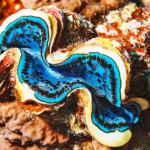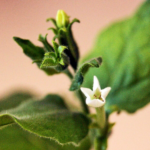Researchers have discovered the mechanism behind melanoma’s resistance to treatment.
These findings could pave the way for more effective therapies.
Malignant melanoma is one of the most aggressive types of cancer. Despite recent progress in effective therapies, the tumors of many patients are either resistant from the outset or become so during the course of treatment.
“It is therefore crucial to understand the mechanism behind resistance development in melanoma,” says Lukas Sommer, professor of stem cell biology at the Institute of Anatomy at the University of Zurich (UZH).
For the study, the team utilized an innovative fine-needle biopsy to sample tumor cells before and during therapy. This allowed the researchers to analyze each cell individually. The patients providing the samples were undergoing targeted cancer therapy for malignant melanoma, which inhibits signaling pathways for tumor formation.
“It was important that some of the tumors responded to the therapy, while others showed resistance,” says Sommer. This allowed the team to compare the metabolism and environment of resistant and non-resistant tumor cells and look for significant differences.
One of the most relevant findings concerned the POSTN gene: it codes for a secreted factor that plays an important role in resistant tumors. In fact, the tumors of patients with rapidly progressing disease despite treatment showed increased POSTN levels.
In addition, the microenvironment of these tumors contained a larger number of a certain type of macrophage—a subtype of immune cell that promotes the development of cancer.
Through a series of further experiments—both with human cancer cells and with mice—the research team was able to show how the interaction of increased POSTN levels and this type of macrophage triggers resistance: the POSTN factor binds to receptors on the surface of the macrophages and polarizes them to protect melanoma cells from cell death.
“This is why the targeted therapy no longer works,” says Sommer.
The team considers this mechanism a promising starting point.
“The study highlights the potential of targeting specific types of macrophages within the tumor microenvironment to overcome resistance,” says Sommer. “In combination with already known therapies, this could significantly improve the success of treatment for patients with malignant melanoma.”
The research appears in Cell Reports Medicine.
The project was carried out in collaboration with Mitch Levesque and Reinhard Dummer from the University Hospital Zurich (USZ).
Funding for this project came from the Wilhelm Sander-Stiftung, the Swiss National Science Foundation, the Swiss Cancer Research foundation, the Comprehensive Cancer Center Zürich, the URPP Translational Cancer Research of UZH, and SKINTEGRITY.CH of UZH.
Source: University of Zurich
Author Profile
- "Center" Bias Rating
- Futurity is a nonprofit website that aggregates news articles about scientific research conducted at prominent universities in the United States, the United Kingdom, Canada, Europe, Asia, and Australia. It is hosted and edited by the University of Rochester.





